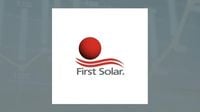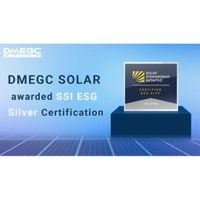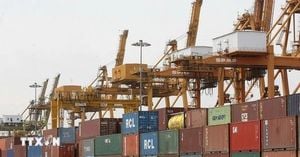The global solar energy sector is basking in the spotlight this week, with a flurry of developments signaling both opportunity and challenge for industry leaders and investors alike. From Voltalia’s ambitious expansion in Europe, to SolarEdge Technologies’ shifting Wall Street sentiment, and First Solar’s impressive valuation metrics, the renewable energy landscape is evolving rapidly—offering hope for a cleaner future, but not without its share of uncertainty and debate.
On October 25, 2025, Voltalia, a major player in the renewable energy industry, commissioned its latest 45 MW solar plant in Dorset, England. The Clifton solar project, as it’s called, marks a significant boost for the United Kingdom’s clean energy ambitions. According to Voltalia, this new plant brings their UK solar and storage portfolio up to 134 MW, solidifying the company’s position as a leading force in the region’s energy transition. The project was first approved in 2022, when Voltalia secured a Contract for Difference (CfD) under the UK government’s fourth Allocation Round (AR4)—a key mechanism that gives renewable energy developers fixed-term contracts and greater revenue certainty.
But Voltalia isn’t stopping there. At the Dorset commissioning event, CEO Sébastien Clerc announced the company’s intention to enter the Polish solar energy market, with plans to commission a similar 45 MW plant in Poland. "We are very pleased to contribute to the growth of renewable energy in Poland by commissioning our first solar power plant in the country. This project is in line with our strategy to develop our activities in Central and Eastern Europe, a region with strong potential for renewable energy. We are proud to support Poland in its energy transition and to contribute to the country’s energy independence," Clerc told attendees, as reported by Renewables Now.
Currently, Voltalia operates 140 MW of capacity across Europe, including 100 MW in Greece and 40 MW in Albania. The company is actively working on 19 more solar plants in the region, which will add a staggering 1.2 GW to its portfolio. The expansion into Poland is seen as a landmark achievement, both for Voltalia and for Poland’s own aspirations to reduce dependence on fossil fuels and bolster energy security. Voltalia CEO Robert Klein echoed this sentiment, stating, "We are very proud to have commissioned the Clifton Solar power plant. This project reflects our commitment to the UK market and our contribution to the national Clean Power goal of generating 95% low-carbon electricity by 2030."
Meanwhile, across the Atlantic, SolarEdge Technologies is making waves of its own—though the mood among analysts remains mixed. On October 25, 2025, financial institutions raised their consensus price target for SolarEdge’s stock from $25.10 to $27.27, reflecting expectations of revenue growth and market share recovery. Barclays and UBS were among the most bullish, hiking their price targets into the $29 to $36 range and highlighting SolarEdge’s efforts to regain share from competitors like Tesla. Barclays, in particular, noted the company’s "upside potential" if it can meet third-quarter consensus targets.
JPMorgan and UBS also pointed out the company’s diversified segment exposure and U.S.-based manufacturing as strengths that support long-term cash flow visibility. Roth Capital, for its part, underscored SolarEdge’s relative strength as a lower-cost provider, particularly in the U.S. residential solar market, where it boasts a greater third-party ownership mix compared to rival Enphase.
Yet, not everyone is convinced the sun will keep shining on SolarEdge. Citi and Guggenheim continue to maintain Sell ratings, citing ongoing concerns about value and execution risks. Roth Capital cautioned that recent share price gains may be driven more by short covering than by robust fundamentals, and UBS remains wary about the long-term demand outlook, especially as U.S. homeowner solar tax credits are gradually phased out.
Adding to the uncertainty, the White House is reportedly considering the cancellation of an additional $12 billion in clean energy funding—a move that could impact SolarEdge and other public solar companies. The Environmental Protection Agency is also planning to terminate $7 billion in rooftop solar grants under the Solar for All program, potentially affecting projects across 49 states, according to Bloomberg. These policy headwinds have injected a dose of caution into what might otherwise be an unbridled rally for solar stocks.
Despite the policy turbulence, SolarEdge is pushing ahead with its global ambitions. The company recently began international shipments of its American-made residential solar products to Australia, marking a significant step in its global manufacturing and export strategy. In addition, SolarEdge is partnering with Solar Landscape to supply U.S.-manufactured solar technology for over 500 commercial rooftop projects, an initiative aimed at powering 80,000 households and promoting distributed solar generation.
While Voltalia and SolarEdge navigate expansion and analyst scrutiny, First Solar is catching the eye of investors for a different reason: its stock appears to be undervalued by traditional metrics, despite a remarkable run-up in price. Over the past week, First Solar’s shares rose 4.1%, with a 10.1% gain over the past 30 days and a year-to-date climb of 29.5%. Looking back three years, the stock is up 82%, and an eye-popping 177.3% over five years, according to Simply Wall St. These gains are fueled by surging demand for next-generation renewable energy solutions and a wave of clean-energy policies around the globe.
Valuation models paint a compelling picture. First Solar’s trailing twelve months Free Cash Flow is negative $1.25 billion, reflecting heavy investment, but projections see this figure soaring to $3.59 billion by 2029. A Discounted Cash Flow (DCF) analysis estimates First Solar’s intrinsic value at $399.57 per share—suggesting the stock is undervalued by 39.6%. The company’s current Price-to-Earnings (P/E) ratio is 20.59x, well below the semiconductor industry average of 39.53x and peers’ average of 84.19x, further indicating undervaluation. Simply Wall St’s "Fair Ratio" model pegs the fair P/E at 37.29x, hinting at even more upside.
But numbers alone don’t tell the full story. Investors are increasingly turning to "Narratives"—story-driven outlooks that link a company’s business prospects to forecasts and fair value estimates. Some investors are bullish, expecting U.S. manufacturing expansion and policy tailwinds to boost earnings and fair value as high as $287 per share. Others, more cautious, are wary of risks like policy reversals or margin pressures, setting their fair value closer to $100. The diversity of these narratives reflects the broader uncertainty—and potential—in the solar sector.
As the world races to transition away from fossil fuels, the solar industry finds itself at a crossroads: poised for explosive growth, but also facing policy, market, and execution risks at every turn. Companies like Voltalia, SolarEdge, and First Solar are charting their own paths—sometimes in harmony with government policy, sometimes in spite of it. For investors and policymakers alike, the coming months will be crucial in determining whether the sector’s recent momentum can be sustained, or if the clouds of uncertainty will cast a shadow over its bright future.







